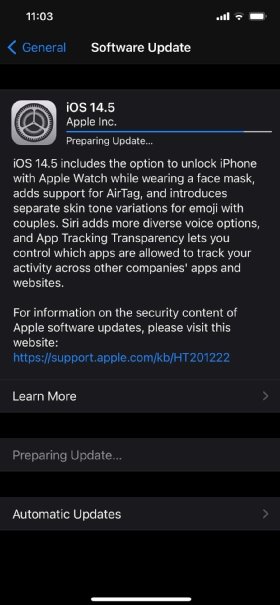Sourced from Forbes
Planning a digital marketing campaign isn’t a simple process. Many factors impact the creation of an effective strategy, and it’s important for everyone involved to be on the same page. However, there are a few aspects of a digital campaign that marketers may not always consider prior to creating a strategy.
As leaders in the communication space, the members of Forbes Communications Council are intimately familiar with what goes into crafting effective digital marketing campaigns. Below, 16 of them share important aspects that marketers should consider before diving into strategizing one.
1. Your Lookalike Audience
Most digital marketing campaigns involve some version of creating a lookalike audience, and most will create a lookalike audience of their entire customer database, but this is a mistake. You don’t want to target all of your customers; you only want to target your “best” customers. When you create these lookalike audiences, only mirror the top 10% to 20% of your customers, not the entire list. – John Huntinghouse, TAB Bank
2. Your Purpose And Success Metrics
Ensure there is a clearly defined purpose with the right success measures in place, then look at it strategically, using data from the entire customer lifecycle. This isn’t just a short-term campaign; it’s about enhancing business performance based on a lifetime of customer experiences that are recorded, analysed and fed back into the brand’s data ecosystem to build personal experiences and lasting relationships. – Azlan Raj, Merkle
3. Alignment With The Overall Marketing Strategy
“How does this campaign align with our overall marketing strategy, and how will it help in delivering the business strategy?” These are two questions I ask my team before starting any campaign, digital included. Another important aspect of digital campaigns includes measurements, and not just the digital metrics, but also how we capture sales metrics aligned with a specific campaign. – Raghunath Koduvayur, IQM Quantum Computers
4. The Customer Journey
What is the customer journey that you want your users to experience? What do you have today? How far is the experience from where you want to be? How do you need to get your experience ready for visitors before investing in inviting people in? – Sarah Falcon, Object Edge
5. Your Customer Profile
Definitely start with your customer profile. Having a really good understanding of the digital habits of your ideal customer is often overlooked, but it’s one of the best ways to influence the content and behaviour of your own digital marketing. – Amanda Davis, Zii Technologies
6. Previous Campaign Performance And Processes
When teams begin planning a digital marketing campaign, they often view the project as a “fresh start” and throw all of the previous campaigns out the window. However, an assessment of previous campaigns in terms of performance and process should be at the heart of planning any new digital marketing campaign. Learn from what you’ve done and keep trying new things. – Alfie Dawson, Datasine
7. Your Target Audiences
It’s important to be aware of and define your target audience for each campaign. In the digital world, one campaign could have multiple audiences, which in turn calls for multiple ads. People are hungry for personalization, so you have to be very diligent and think through all of the different touch points within a campaign to ensure the message is speaking to the proper audience. – Emily Burroughs, BGSF
8. Contextual Targeting Through Other Channels
In light of recent changes to the availability of consumer data, digital marketers need to acknowledge the increasing importance of contextual targeting and consider other channels in the wider mix. Unlike in the online world, out-of-home advertising is one-to-many, and context has always been king. With the advancement of programmatic digital out-of-home (DOOH) media, marketers now have far greater control to deliver contextual messages globally and at scale. – Nikki Hawke, Hivestack
9. Testing Budget
Testing budget isn’t really something that many digital marketers talk about. View it and use it as you would money when you go to a casino: You are taking a risk, but it’s money that you can lose, and it won’t break the bank. Unlike gambling, though, if you have a great creative team you will probably get that ROI back! – Philip Kushmaro, Usercentrics
10. Purchase Behavior
Marketers should consider purchase behaviour targeting. Rather than targeting a campaign at a specific age group, profession or gender, you should aim to reach people who have purchased similar products in the past and are therefore more likely to buy them again. Here, targeting is based on proof, not an assumption. Marketers can expect conversion rates to rise and the bottom line to increase. – Anil Malhotra, Bango
11. How You Can Leverage Chatbots
Digital marketing campaigns have to be omnichannel and provide the right information to customers at their point of interaction. Real-time conversation via chatbots can help turn visitors into prospects and customers. Be sure to add chatbots to the strategy and think through how the campaign message can be personalized and delivered via these intelligent tools. – Parna Sarkar-Basu, Brand and Buzz Marketing, LLC.
12. First-Party Data
Knowing how to use first-party data is a critical first step. In our cookie-less world, it’s increasingly expensive to acquire new customers. To maintain the ROI of digital programs, marketers must focus on creating long-term customer engagements that increase the lifetime value of any customer they do acquire. And the best way to do that is to use first-party data to create unique, engaging experiences. – Christian Selchau-Hansen, Formation
13. Where The Target Is In The Sales Funnel
As marketers, we need to evaluate where the target is in the funnel and align our strategy accordingly. Are you not only looking for buzz and to create amplification for your brand, but also to potentially bring a number of unqualified contacts, leads or visitors to your website? Or is it something more product-focused to engage with people who already know about the brand but are still discovering what you do? – Alison Bringé, Launchmetrics
14. The Follow-Up Communication Plan
Assuming the basics—goal, audiences, content, visuals, channels and measurement—are defined, the digital marketing campaign funnel and follow-up communication plan are critical for monetization purposes. This should be based on a mix of segmentation buckets with clear goals to convert leads, boost activity and build loyalty. Growth acquisition, support and loyalty-team dialogue are key here. – João Mendes-Roter, Itamar-Medical
15. Other Internal Viewpoints And Ideas
As a marketer, you should have multiple brainstorming sessions with your internal teammates. This should include sales and other teams that are impacted by the campaign. Another very important part is to create messaging that embodies your solution. – Alex Cox, Opsani
16. The Cost Of Doing It Right
Many don’t consider what it costs to do it right. As a product-based company, we need multiple studio shots, videos and blackouts to create the right digital imagery. These upfront costs are more expensive to commit to consistently than the fairly transparent ad-buying CPC and ACoS metrics that you will track and optimize to define the winners after the initial investment. – Edwin Bender, Broan-NuTone
Sourced from Forbes
Communications, PR, public affairs & media relations executives from Forbes Communications Council share firsthand insights.



















